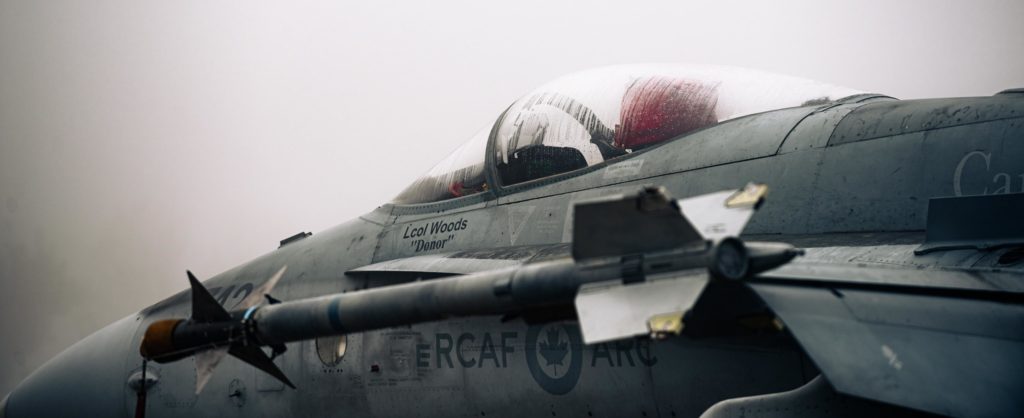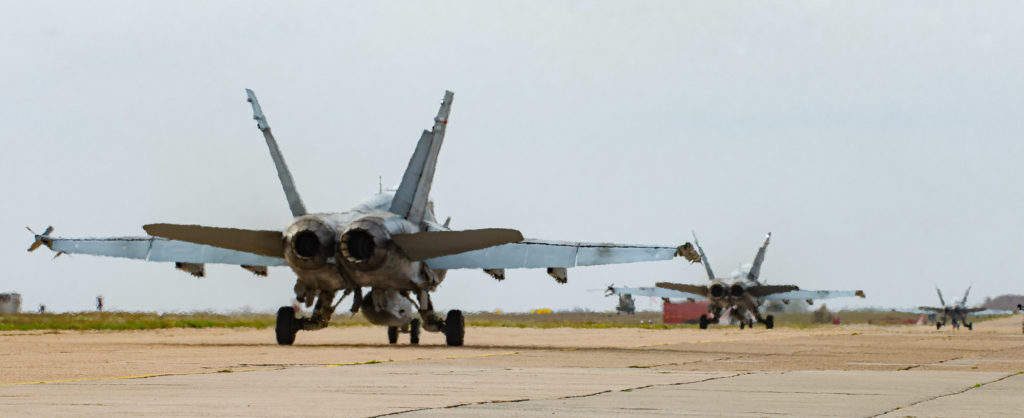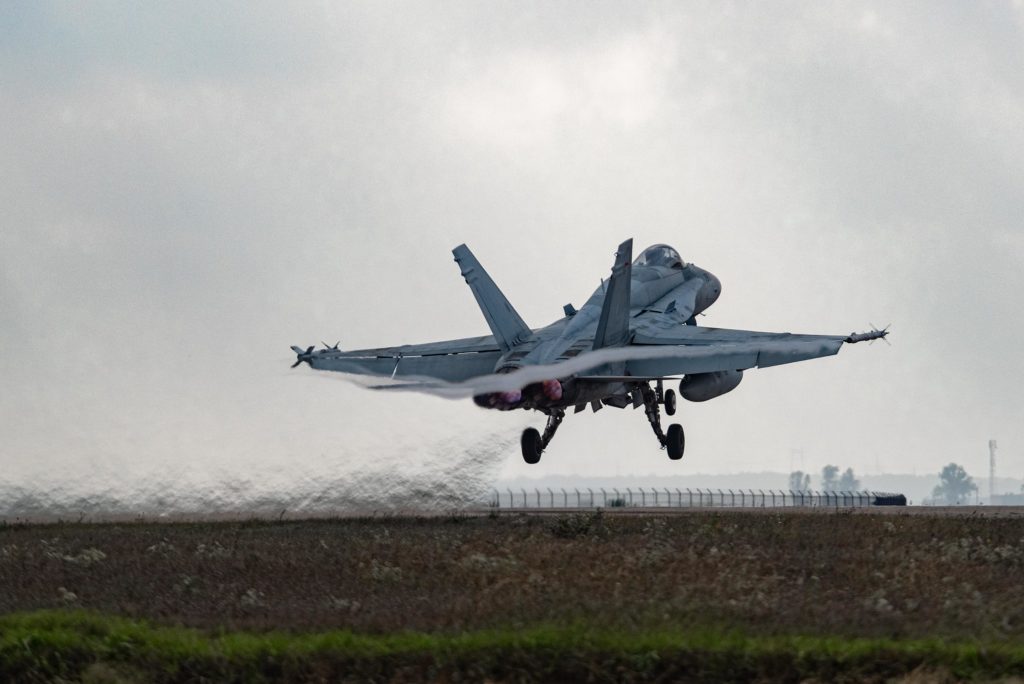Estimated reading time 12 minutes, 30 seconds.
As most Canadians quietly celebrated the end of a tumultuous 2020 on Dec. 31, the members of Air Task Force – Romania held their final quick reaction alert (QRA) posture near the Black Sea, and conducted their last flights — capping a four-month NATO enhanced air policing mission.
Since Sept. 5, about 135 Canadian Armed Forces (CAF) personnel — mostly from 433 Tactical Fighter Squadron at 3 Wing Bagotville, Que. — and six CF-188 Hornets have augmented Romanian Air Force capabilities to patrol the skies along the western shore of the Black Sea, while also conducting exercises with Romanian, Bulgarian and other NATO allied forces.

The Air Task Force (ATF) is part of Operation Reassurance, Canada’s contribution to deterrence measures in Central and Eastern Europe.
On Jan. 1, just hours after the final flight, they began the arduous task of cleaning and packing equipment and preparing the fighter jets for the return trip to Bagotville. While some equipment will remain in sea containers at Mihail Kogalniceanu Air Force Base for the next detachment in the fall of 2021, most will be flown or shipped home, including a fire truck used to augment Romanian airfield emergency capabilities that now requires maintenance.
The CF-188 pilots, supported by a CC-150 Polaris air-to-air refuelling tanker currently in Bucharest, will first fly to the Azores to conduct any necessary maintenance before making the long flight across the Atlantic.
“We will start sending [the Hornets] out in twos over the next few days,” said LCol David McLeod, the ATF commander. “By mid-January, all the jets will be home. And by late January, all our people and most of the equipment should be as well.”

The first months of the mission were characterized by an exceptionally high operational tempo with a large Russian military exercise in the southern region, Kavkaz 2020 (Caucasus 2020). And training events with NATO allies kept the ATF aircrews, maintainers and headquarters staff on their toes. The highlight came on Sept. 23 when two Hornets intercepted a Russian Su-27 Flanker over the Black Sea. Though a relatively “benign” intercept, the event ticked an important box for the air detachment. “We’ve been able to do what we came here to do. The pilots were amped up and our maintainers and everyone else on the detachment was really excited,” McLeod said at the time.
Since November, however, the tempo has decreased noticeably. “It has been quite quiet,” the commander admitted in an interview with Skies on Jan. 5. “We have been doing our own training flights, and some training flights with the Romanian Air Force and their MiG-21 folks; there’s been no other activity from the other side of the Black Sea.”
Poor weather and a surge in COVID-19 diagnoses in the region reduced much of the flying in the final months. Heavy fog and some snow resulted in “one week here, one week there where we probably did not turn a wheel,” he said.
Though not wholly unexpected in November and December, the thick fog in the morning would lift briefly in the late afternoon, only to roll back in the evening. However, the short window for taking off was often disrupted by large flocks of birds congregating at a garbage dump not far from the airfield at dawn and dusk. “We joked that it was like being in a Hitchcock movie, there are so many birds,” said McLeod, referencing The Birds. “We won’t fly in that unless we absolutely have to.”
Fewer flying hours did not affect pilot currencies, he added, but “weather days” did reduce the amount of flying compared to previous ATF rotations.

So too did the presence of COVID-19 around Constanta and at the air base. While there were no positive tests among CAF personnel as of Jan. 5, there were confirmed cases among allied personnel and in the local workforce that operates the cafeteria, the gym and other support services.
“We thankfully have been able to keep everyone healthy. [But] we were as close to a lockdown on the base as you could conceivably get,” said McLeod. Restrictions were eased somewhat in late December as local COVID numbers improved. This allowed the ATF to hold a “moral-boosting” catered, multi-sitting Christmas dinner served by officers and senior non-commissioned officers in a large tent.
The pandemic prevented or curtailed training exercises with allies in the region, including a planned close air support exercise with the Canadian-led multinational battle group in Latvia. In the final months of the deployment, the main training event consisted of an air defence exercise with the United States Navy when the USS Donald Cook, an Arleigh Burke-class guided missile destroyer, arrived in the Black Sea in late November.
“We didn’t quite get everything done that we wanted” due to weather delays, said McLeod. “They were re-tasked and had to leave the Black Sea before we got to do more training with them. But we got one training event in and integrated with the NATO AWACS. It’s nice to get different pieces of the NATO puzzle together and get that cross-talk going.”
The remaining non-QRA flying has consisted of several exercises with Romanian counterparts flying the MiG-21 Lancers and F-16 Fighting Falcons — though they, too, scaled back activity as they entered the Christmas period. “They were able to operate at least a couple of four-ship flight leads,” explained McLeod of ongoing development of Romanian four-ship operating concepts. This included an exercise in October with two F-16s and two CF-188s collaborating as a four-ship against an F-16 and CF-188 flying adversarial air.

Following his out-briefing with the Romanian Air Force, McLeod said there is also a strong desire for more air-land integration when Canada next deploys an air detachment. Both countries will also begin planning and preparing earlier to “overcome some of the obstacles COVID-19 throws in our way,” he added. “COVID-19 has added an extra dimension of planning that needs to be taken into consideration even earlier on. We made some adjustments in the planning cycle to take that into account, but we found we could have made more adjustments than we did.”
While the next ATF will likely be vaccinated before they deploy, McLeod said his advice to his successor would be to assume COVID will still be a complicating factor next fall and “get that planning going as early as possible. It is never too early to start those discussions with our Romanian allies here.”
How many CF-188s are in the mix will depend on the demands of the mission, and on other CAF priorities at the time. McLeod deployed with six jets, one more than the previous two rotations. He said the extra jet gave them more flexibility to manage any delays created by the pandemic for airlift of spare parts and to conduct training while meeting the QRA requirement.
“We found six jets worked quite nicely for us,” he said. “And we would have been able to do more tasks — for example, the [close air support] in Latvia. The Army will be chomping at the bit for us to get that in place for next fall. If we are going to keep doing something like that, we’ll want to think about at least five to six airplanes.”

When the members of 433 Squadron touch down in Bagotville, they will have a brief break and time to “reconstitute the squadron.” That will include incorporating some of the lessons and knowledge acquired over the past four months working alongside coalition partners. “We’ll bring that back in, [and] incorporate some of those lessons learned in terms of co-ordination of our mission planning, our training and things like that,” explained McLeod. The experience of planning and flying with non-traditional allies like Romania and Bulgaria “gives us a good reset on the measurement of where NATO fighting standards fit within our fighting standards.”









This is a great story.
Thank you.